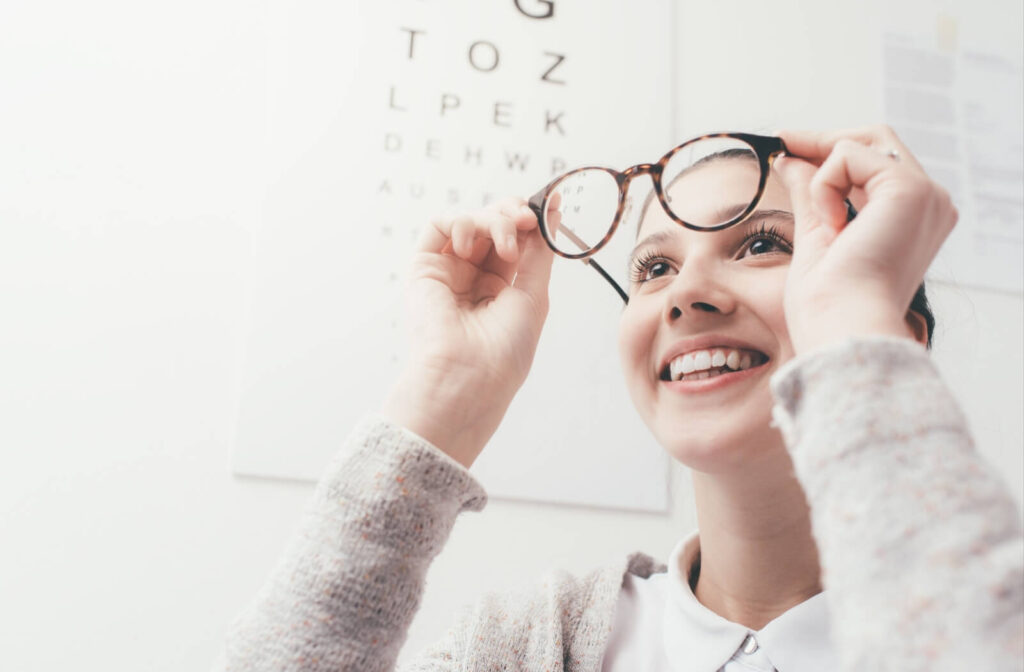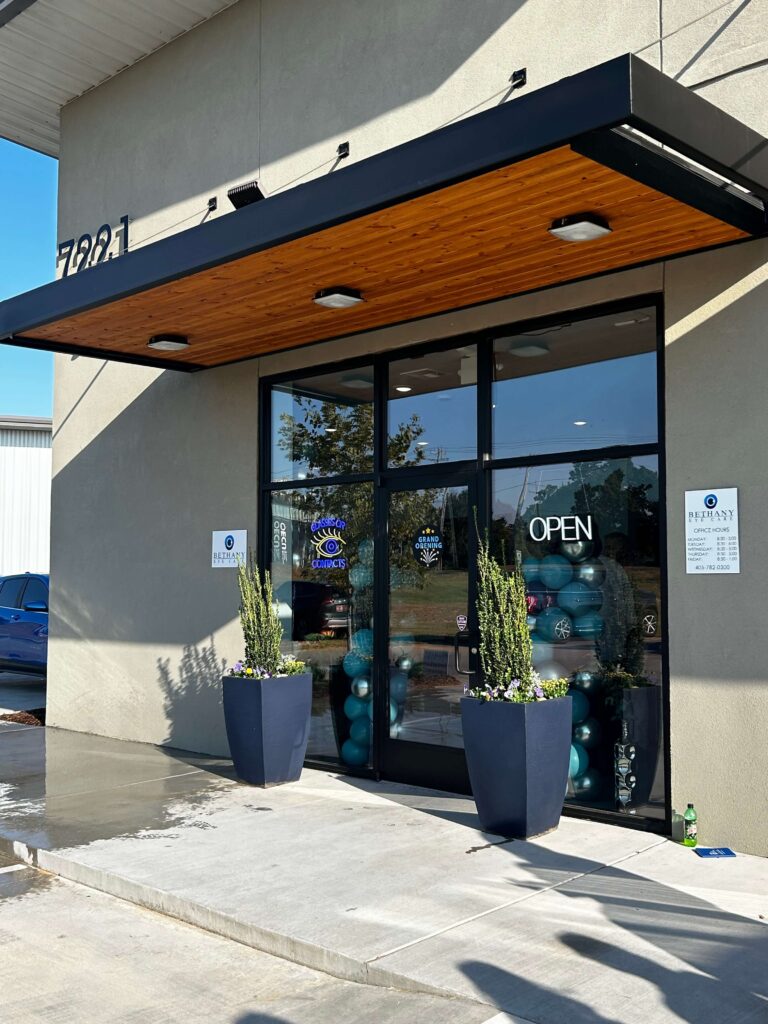You may have heard that nearsightedness gets better as you get older, especially when you start needing reading glasses. For families with multiple generations who wear glasses, it’s a common topic of conversation around the dinner table. This guide explores how myopia, or nearsightedness, really changes throughout a person’s life, from children’s eye exams to appointments for seniors.
The truth is that myopia does not improve with age, but other vision changes can sometimes create the illusion that it has. Let’s dive into what’s happening with your eyes at every stage of life, from childhood to the grandparent years, and how our approach to adult and senior eye care adapts to those changes.
What Is Myopia or Nearsightedness?
Myopia, also known as nearsightedness, is a common vision condition that makes distant objects look blurry while close-up objects remain clear. Myopia occurs when the shape of your eye causes light to focus in front of the retina instead of directly onto it. This can make activities like driving, watching a movie, or seeing the board in class a challenge.
Common Signs of Myopia
If you or a family member notice some of the following symptoms, then myopia may be a possibility.
- Blurry vision when you look at faraway objects
- A need to squint to see clearly
- Headaches from eye strain
- Tired eyes, especially after long tasks
How Myopia Changes Through Life
Myopia often appears during childhood, when the eyes are growing quickly. Because of this growth, a child’s vision prescription may change frequently from year to year. Your eye doctor can track these changes during regular exams to monitor your child’s eye health.
Myopia in Children & Teens
Myopia commonly develops between the ages of 6 and 14. A child’s daily habits—like time spent on screens versus time spent outdoors—can influence how their vision develops. In fact, research shows that bright light exposure from outdoor time can reduce the risk of myopia in children. Your family’s vision history also plays a part in whether a child may develop nearsightedness.
When Does Myopia Stabilize
For many people, myopia stops progressing in their early 20s. This happens because the eyes have typically finished their main growth phase. At this point, your prescription for glasses or contacts often becomes stable for many years.
Vision Changes for Adults Over 40
While myopia itself doesn’t usually reverse, you might notice other changes in your vision after age 40. These changes are typically caused by different age-related eye conditions, not an improvement in your nearsightedness. It’s a new chapter for your eyes that brings about different focusing challenges.
Why Your Eyesight May Seem to Improve
A perceived improvement in distance vision could be related to presbyopia—a natural hardening of the eye’s lens that makes close-up focus harder. Additionally, early cataracts can temporarily alter the eye’s focus, which might briefly reduce nearsightedness before causing other vision problems.
However, these effects are temporary and tend to disappear as cataracts and presbyopia continue to develop. This is why we prioritize eye disease diagnosis and management as you get older.

The Purpose of Myopia Control
During the school years, myopia usually progresses over time. While myopia can’t be cured, its progression can be slowed—and this is the goal of myopia control.
Reduce Risks of High Myopia
When myopia isn’t managed, it can become what’s known as high myopia, which significantly increases the risk for other eye conditions later in life, including glaucoma, cataracts, and retinal detachment. Taking steps to slow myopia progression early is a great way to support a lifetime of healthier vision for your child.
Myopia Management Options for Your Family
Several methods are available to help manage myopia progression, particularly in children and teenagers. As your eye doctor in Bethany, we can discuss which options are suitable for your family’s lifestyle and needs.
Specialty Contact Lenses
Certain contact lenses are designed for myopia control, and a professional contact lens exam can determine the right fit. Orthokeratology—or ortho-k—lenses can be worn overnight to gently reshape the front surface of the eye, providing clear vision during the day without glasses. Multifocal soft contact lenses, worn during the day, are another option that can help slow progression.
Low-Dose Atropine Eye Drops
These prescription eye drops are typically used once a day. They work by relaxing the eye’s focusing mechanism. Studies show that atropine drops can safely slow the progression of nearsightedness in children.
Corrective Eyeglasses
While standard eyeglasses correct blurry vision, myopia control lenses can also help manage myopia. Your eye doctor may recommend bifocal or multifocal lenses in certain cases. These lenses can help reduce eye strain during close-up tasks like reading or using a computer.
Keep Your Family’s Vision Clear
Myopia is a common condition that affects people of all ages, and managing it is a family affair. Regular eye exams are important for every member of your family—from children experiencing their first vision changes to grandparents who need to monitor their eye health. It’s all part of keeping everyone’s eyes happy and healthy.
At Bethany Eye Care, we love helping families see their world clearly. Whether you have questions about your child’s vision or are noticing changes in your own, we’re here to help. Schedule an appointment with our friendly team today!




